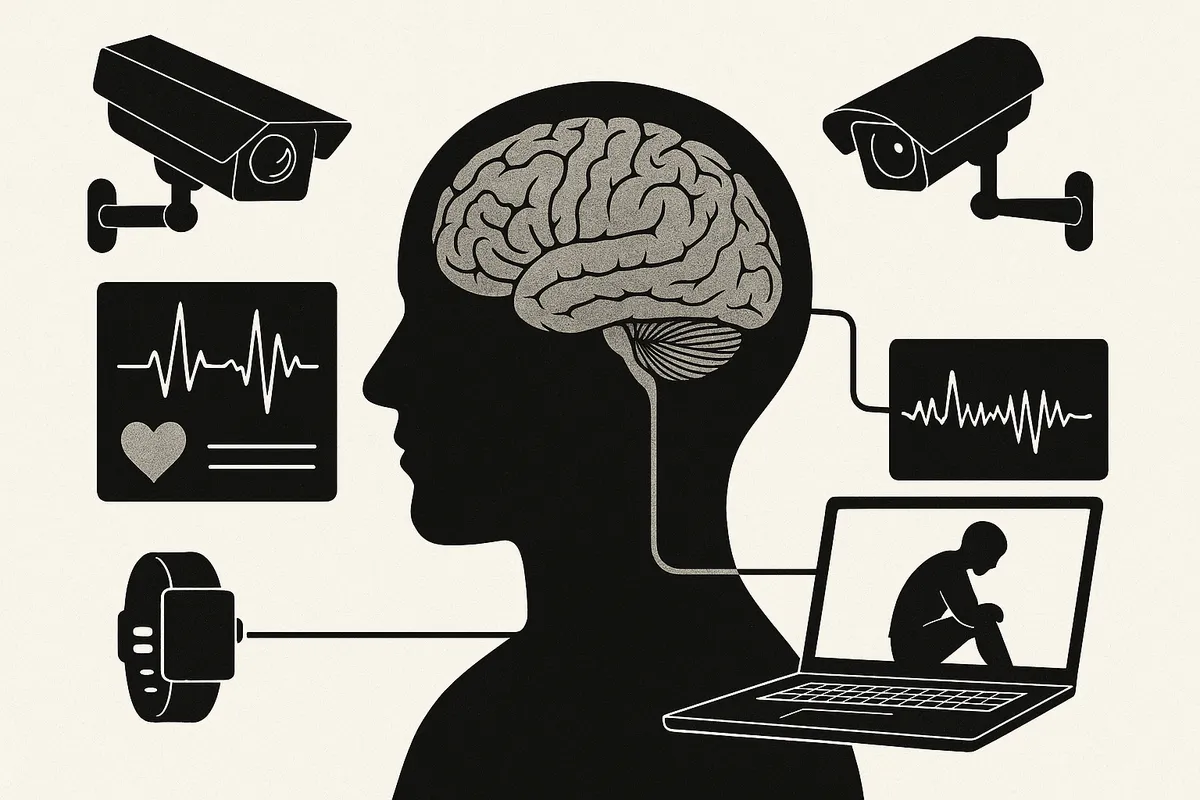Predicting Autistic Behavior or Predicting Compliance?
 Who Holds the Sensors? Who Holds the Power?
Who Holds the Sensors? Who Holds the Power?
A new narrative review in Journal of Personalized Medicine (Ferina et al 2025) surveys the expanding field of predicting so-called challenging behaviors in autistic people. The title promises safety and quality of life. The text delivers something else: an infrastructure for pre-emptive control.
Authors and Affiliations
The paper is authored by Jennifer Ferina, Emma Dando, Conor Anderson, Jenny Foster, Johanna Lantz, Theresa Hamlin and Juergen Hahn. The lead authors are affiliated with the Department of Biomedical Engineering and the Center for Biotechnology and Interdisciplinary Studies at Rensselaer Polytechnic Institute, Troy NY. Several co-authors are based at The Center for Discovery, Harris NY and Hahn also holds an appointment in RPI’s Department of Chemical and Biological Engineering.
Sensors on the Body and in the Room
The review catalogs wearable sensors measuring heart rate and skin conductance, accelerometers to detect movement, smart beds tracking restless sleep and computer vision systems watching for gestures. These tools are presented as promising methods to forecast aggression, self injury, elopement or disruption.
The message is clear. Autistic bodies are being framed as data streams that can be mined for predictive signals. Variation is recoded as risk. The context in which distress arises rarely matters.
From Prediction to Intervention
Prediction is not neutral. The review places these techniques alongside pharmacological timing, applied behavior analysis derivatives, environmental restriction and even citations to deep brain stimulation. Wearables and cameras are not framed as neutral study tools, but as technologies that could be folded into existing intervention logics. While the authors do not prescribe prediction-activated restraint or invasive treatment, the absence of explicit guardrails leaves the door open to such uses.
When the paper claims this will improve safety and caregiver quality of life, the autistic person’s safety and quality of life are made secondary. Consent is not completely absent but appears only in passing, treated as peripheral rather than central. Agency is effectively erased.
Personalized Surveillance Dressed as Care
One of the strongest claims in the review is that individualized models outperform population models. The authors celebrate this as personalized medicine. The autistic reader will recognize it as personalized surveillance. Predictive tools tuned to one body, one set of behaviors, one profile of compliance.
The Harm Trajectory
This paper is not simply descriptive. It is an agenda-setting review that lays out how biosensors and machine learning can be embedded into autism care. That trajectory carries obvious risk. Predictive policing logic applied to autistic life. Data-driven justification for pre-emptive intervention. Rhetoric of safety masking structural coercion.
Our Takeaway
Ferina and colleagues frame their review as progress. The deeper reading is cautionary. Prediction of autistic behavior is not a neutral science. It is a political choice to prioritize managing environments for caregivers over reshaping environments for autistic people. What is at stake is autonomy, dignity and the right to define one’s own life — not predictive accuracy. Unfortunately, the authors remain anchored in academia's deficit frame and fail to see it that way.